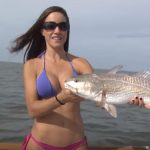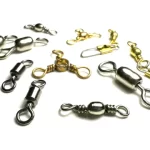Fly fishing offers endless possibilities for anglers eager to challenge themselves and improve their skills. Beyond the basics, mastering advanced techniques can significantly boost success on the water. This article covers essential methods such as Euro nymphing, streamer fishing, dry-dropper rigs, and stillwater tactics, along with expert insights into casting and targeting unique species like striped bass and bonefish.
Euro Nymphing for Precision
Euro nymphing, also known as contact nymphing, is an effective way to catch trout by keeping flies near the riverbed where fish often feed. This technique uses long rods and thin leaders, allowing precise control over drift and depth. Originating from competition fishing, Euro nymphing has evolved into a go-to method for many anglers seeking consistency in varying water conditions.
Tactics for Small Streams
Small stream fly fishing brings anglers closer to nature with minimal gear and straightforward fly choices. While fish in these waters are often smaller, they are wild and present an exciting challenge. Techniques focus on dry fly presentation, and anglers should expect to encounter obstacles like overhanging branches. Learning to avoid snags and improving short, delicate casts are key to success in these environments.
Streamer Fishing for Big Trout
Streamer fishing has expanded significantly over the past decade. Modern streamers are often larger, flashier, and more versatile than traditional patterns. They can be fished by swinging through current, stripping near banks, or using dead-drift techniques. Night fishing with streamers or mouse patterns adds another layer of excitement, as large predatory trout often become more aggressive after dark.
Effective Use of Indicators and Dry Droppers
Nymph fishing with indicators or dry-dropper rigs is one of the most reliable ways to catch trout throughout the season. An indicator allows anglers to detect subtle strikes, while the dry-dropper rig combines a floating dry fly with a trailing nymph. Proper rigging and fly selection depend on water depth and clarity. Adjusting the leader length and indicator position ensures the nymph remains at the ideal depth for enticing fish.
Steelhead Strategies in the Great Lakes
Great Lakes steelhead, often called lake-run rainbows, migrate upriver from fall to spring, providing an exciting target for fly anglers. Whether using egg patterns, nymphs, or streamers, understanding river conditions and steelhead behavior is critical. Gear selection typically includes longer rods, strong tippets, and reels with smooth drag systems to handle these powerful fish.
Mastering Stillwater Techniques
Stillwater fly fishing for trout requires different tactics than river fishing. Effective methods include using long leaders, subtle retrieves, and balanced flies to imitate natural prey. Floating lines and strike indicators help detect bites when fishing with chironomid or nymph patterns. Anglers should vary retrieval speed and depth until fish activity is located.
Advanced Casting Tips
Perfecting the fly cast can dramatically improve success in diverse conditions. Techniques for casting in the wind, increasing distance, and improving accuracy help tackle various fishing scenarios. Two-handed casting methods, traditionally used with spey rods, can also enhance single-handed rod performance. Additionally, refining the roll cast and learning to mend line effectively reduce drag and improve fly presentation.
Exploring New Waters and Species
Targeting species beyond trout, such as striped bass and bonefish, introduces anglers to new environments and techniques. Striped bass thrive in coastal waters and estuaries, readily taking baitfish patterns. Bonefish, found on tropical flats, offer thrilling sight-fishing opportunities with explosive runs once hooked. Mastering presentations for these species requires stealth and accurate casting.
By embracing advanced techniques and broadening the range of targeted species, anglers can elevate their fly fishing experience. Whether fishing familiar waters or venturing into new environments, a willingness to learn and adapt ensures continued growth and greater success on the water.
Image/Source: Orvis





